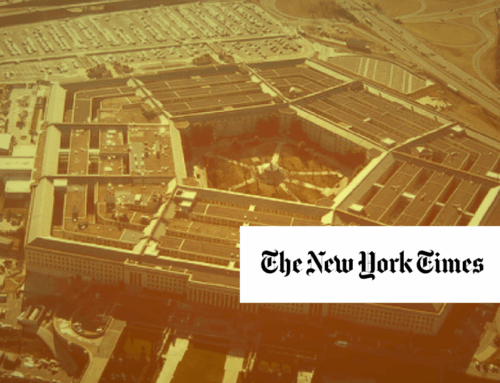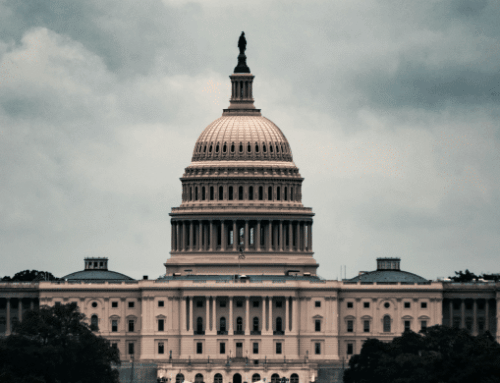TCS National Security Analyst Laura Peterson published the following commentary as a guest writer on Budget Insight , the blog of the Stimson Center's Budgeting for Foreign Affairs and Defense program. You can see the original here .
Trying economic times present a double-edged sword for those at the budgetary wheel in Washington. On one hand, financial scarcity can promote budget trimming and encourage efficiency. On the other, it feeds political incentive to throw money at anything that might create a job or secure a vote from constituents worried about their next paycheck.
We are witnessing this dynamic play out right now in the defense budget. This may surprise Beltway old-timers who consider national security spending untouchable, but it is exactly that attitude that has pushed the budget to such heights even Defense Secretary Robert Gates is trying to tame it.
“Too often budgets are divvied up and doled out every year as a straight line projection of what was spent the year before,” said Gates in a recent speech. “Very rarely is the activity… ever fundamentally re-examined, either in terms of quantity, type, or whether it should be conducted at all. That needs to change.”
Efforts to reform the defense budget have ebbed and flowed over the years, occasionally breaking the surface only to recede with varying degrees of success. The game changer this time around is a $1.5 trillion-dollar budget deficit that is slated to hit $23 trillion by 2020. We are already paying more than $200 billion a year in net interest on the debt, a figure that’s on track to hit $900 billion in ten years.
Recognizing the danger this poses to our national interest, President Obama recently appointed the National Commission on Fiscal Responsibility and Reform to recommend ways to keep fiscal collapse at bay. He also proposed a discretionary spending freeze across the federal government—but provided an exception for the Defense Department.
This exceptionalism reinforces the misconception that any and all defense spending is necessary during times of conflict. To counter this line of thinking, analysts from twelve non-governmental research and advocacy organizations from across the political spectrum (including Taxpayers for Common Sense) last week released a report outlining a range of options for trimming the defense budget. The recommendations could potentially save nearly one trillion dollars over the next ten years without compromising America’s national security.
Suggestions for savings go beyond acquisition reform to reach every part of the Pentagon, from force structure to supply systems to the personnel and healthcare costs that Gates says are “eating the Defense Department alive.” The group focused on programs that depend on unreliable or unproven technologies, mismatch or over-match military challenges or need management reforms. Recommendations include reducing military personnel in Europe, shrinking the nuclear arsenal and eliminating white elephant weapons such as the Expeditionary Fighting Vehicle.
In recognition of our current overseas commitments, the report doesn’t address wartime spending, but a look at recent budget trends shows why that’s not necessary for rooting out waste: While the federal discretionary budget has nearly doubled since 2001, more than one third of that increase comes from growth in the Pentagon’s base budget, excluding war costs. In fact, DOD’s base budget also roughly doubled during that time. The proposed fiscal year 2011 base budget clocks in at $550 billion and would consume 56 percent of discretionary spending.
The fact is that we may not be doing our military any favors by flooding it with cash. Secretary Gates admits this influx of money only exacerbated DOD’s inability to set priorities, while the Congressional Budget Office has warned that DOD’s long-range plans are so expensive they are unsustainable even with modest budgetary growth. Strategy involves balancing threats against risks, and assessing risks must consider resource availability: Excluding resources from the equation only renders every objective less important in their equality. An example of this problem is the Quadrennial Defense Review, the military assessment required every four years by Congress. The QDR was originally intended to discuss the budget “required to provide sufficient resources” for its goals, but the law was later amended to accommodate those who believed it shouldn’t be constrained by fiscal reality. The result is a document considered largely irrelevant both inside and outside the Pentagon.
Continuing down this dangerous path can endanger funding for necessary defense programs by making them even more expensive and unsustainable in the long run, ultimately depriving our men and women in uniform.
A fat and undisciplined defense budget also encourages bad behavior by Congress. The defense appropriations bill’s girth provides plenty of places to tuck nebulous research programs and thousands of earmarks—a fact of which defense companies and lobbyists are well aware. The legislation’s status as the federal government’s sole “must pass” spending bill also invites lawmakers to hitch their wagons to its bumper. Representative Barney Frank (D-MA)—who convened the report task force—calls this approach “weaponized Keynesianism,” in reference to politicians who criticize government attempts to stimulate the economy via domestic spending but defend weapons programs as job creators. Yet many economists point out that defense spending—especially on capital-intensive, single-use weapons—does not constitute a sustainable or efficient jobs program.
It is certainly true that economic stability and defense spending are linked. The recently released National Security Strategy correctly observes that “our prosperity serves as a wellspring of our power.” It also cautions that maintaining that power will “require a disciplined approach to setting priorities and making tradeoffs.” That does not mean trading off our fiscal health for short-term political gain. We can make sensible tradeoffs in our defense budget that will keep our citizens and economy safe.










